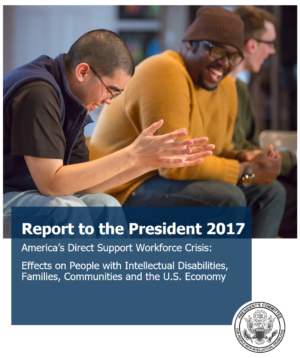For Service Providers
State of the Workforce Survey (Formally ‘Staff Stability Survey’)
The annual NCI-IDD State of the Workforce Survey collects comprehensive data on the Direct Support Professional (DSP) workforce providing direct supports to adults (age 18 and over) with intellectual and developmental disabilities (IDD). The goal of the survey and the resulting data is to help states examine workforce challenges, identify areas for further investigation, benchmark their workforce data, measure improvements made through policy or programmatic changes, and compare their state data to those of other states and the NCI-IDD average.
State of the Workforce Survey: WHY?
- Lack of data about direct service workforce
- Data are needed to assess how the workforce is changing and where challenges are
- Standardized methods for collecting and calculating the data provides credibility to the final results
- “Speaking as one voice” vs. fragmented voices
Data for Action
States across the country have used the NCI-IDD State of the Workforce Survey data to demonstrate the critical nature of the DSP workforce crisis to legislators and policymakers. Case in point: The data was figured prominently in the United States President’s Committee for People with Intellectual Disabilities 2017 Report.

States are also engaging in deeper examinations of the data to determine the impetuses and drivers of workforce challenges.
Advocates and researchers are analyzing the data to inform research into the workforce crisis and determine strategies to address the issues.
The release of the 2020 State of the Workforce Survey data from 26 states and the District of Columbia marks another opportunity for state developmental disability agencies, advocates, and researchers to work together to determine the best strategies to address the DSP workforce crisis. Moreover, data from the COVID-19 survey supplement can allow states to examine gaps and strengths in emergency responses and gain a better understanding of how providers experienced the pandemic.